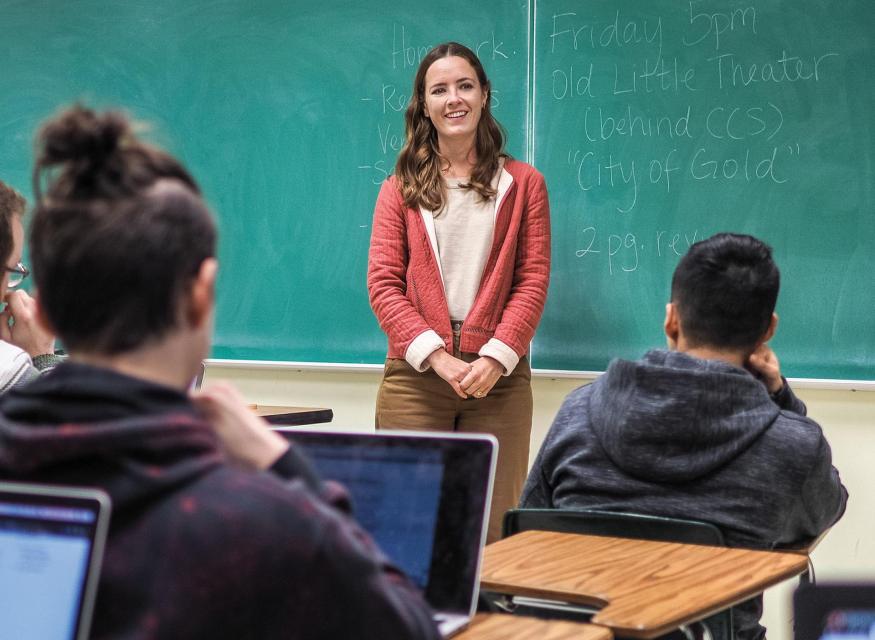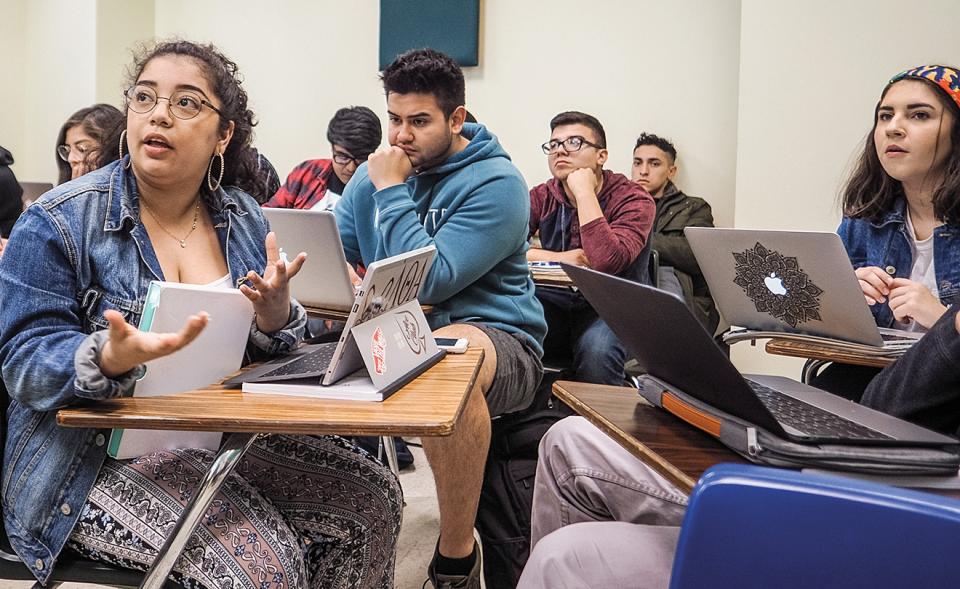Evaluation can be a harrowing experience for any educator. But for non-tenured faculty in the UC system, the emotional drain is compounded by the critical role that evaluations play in whether a lecturer continues to work at all.
“We’re reviewed every two years until we get our appointment,” explains Ellen Whittet, now in her sixth year teaching at UC Santa Barbara. “We have to put together a portfolio made up of three elements — our teaching, service to the university community, and professional development. The evaluations of students are really important to the teaching component.”
Those evaluations are collected and evaluated by the Instructor and Course Evaluation System, which, according to its website, “allows students to provide feedback, which is used to improve courses and instruction.” While faculty themselves can view the assessments (although not the names of the students making them) they are also reviewed by department chairs “to assess both their faculty, and the value of courses offered in their department,” and by university committees “as part of faculty reviews, to determine promotion and tenure.”
This sounds like a democratic exercise, allowing students input into the quality of the instruction and those giving it. The reality is much more complex.
According to the American Association of University Professors, “student evaluations and their use by institutions exacerbate the problems of a two-tier system, compromising the quality of education.” UC-AFT President Mia McIver, who developed a presentation to assist lecturers in coping with the system, adds that “because administrators rely on student evaluations to decide whom to reappoint, non-tenure-track faculty have an incentive not to offer rigorous and challenging courses. This ultimately compromises educational quality.”
Many argue that students’ gender and race biases can play a part in their evaluations. “Teachers tell me their evaluations say ‘how nice she is,’ or that ‘she has great style,’” Whittet says. “One recalled an evaluation that said ‘gotten too sassy recently.’ The positive comments still would only be made about a woman, while the negative ones imply that ‘she doesn’t know her place.’ Evaluations are more likely to call a white professor ‘brilliant’ while questioning the qualifications of a teacher of color.”
Whittet says the inclusion of these biases isn’t really the fault of the students. “They’re not experts. The bigger problem is that the students don’t really understand that what to them are gripes can have such a profound impact on the job of the teacher. They’re really about how the student perceives the class, because they don’t have the criteria to make a real evaluation of the instruction.”
“The bigger problem is that the students don’t really understand that what to them are gripes can have such a profound impact on the job of the teacher.” — Ellen Whittet
McIver notes in her presentation that student evaluations began a century ago, as private communications between student and instructor. In the 1960s, as students demanded more of a voice in their education, evaluations began to be publicly circulated. Administrators soon exploited the student initiatives to effectively outsource teacher assessment, displacing it from peers onto students alone.
Subsequent studies cast doubt on the objectivity and value of the evaluations. In one, “a charismatic actor giving a nonsense lecture was rated highly by a well-educated audience,” while another showed that students “tend to assign high ratings to teachers from whom they learn the least.”
McIver and the union have suggested ways instructors can talk with students about the evaluations, including emphasizing how serious they are, who reads them, and the use made of them. “Students deserve transparency about how their university works, including info about the relationship between student evaluations of teachers and reappointment for contingent faculty,” she says. “Talk with students about how the learning process is intended to challenge them to grow, not entertain or please.”
Whittet cautions, though, that too much discussion from the teacher can seem self-interested. She thinks the system is curable, but would need a huge overhaul. “Because it affects lecturers so greatly,” she argues, “the proposals for change should include their voices.”
The current UC-AFT contract for lecturers provides some protection, including access to the reports and evaluations by those evaluated, the addition of assessments by successful former students and other faculty members, and “that the quantitative measure in the student evaluation is not the sole criterion for evaluating teaching excellence.”
McIver predicts that the next UC-AFT contract negotiations will seek to reduce the weight given to student evaluations.
— By David Bacon, CFT Reporter


